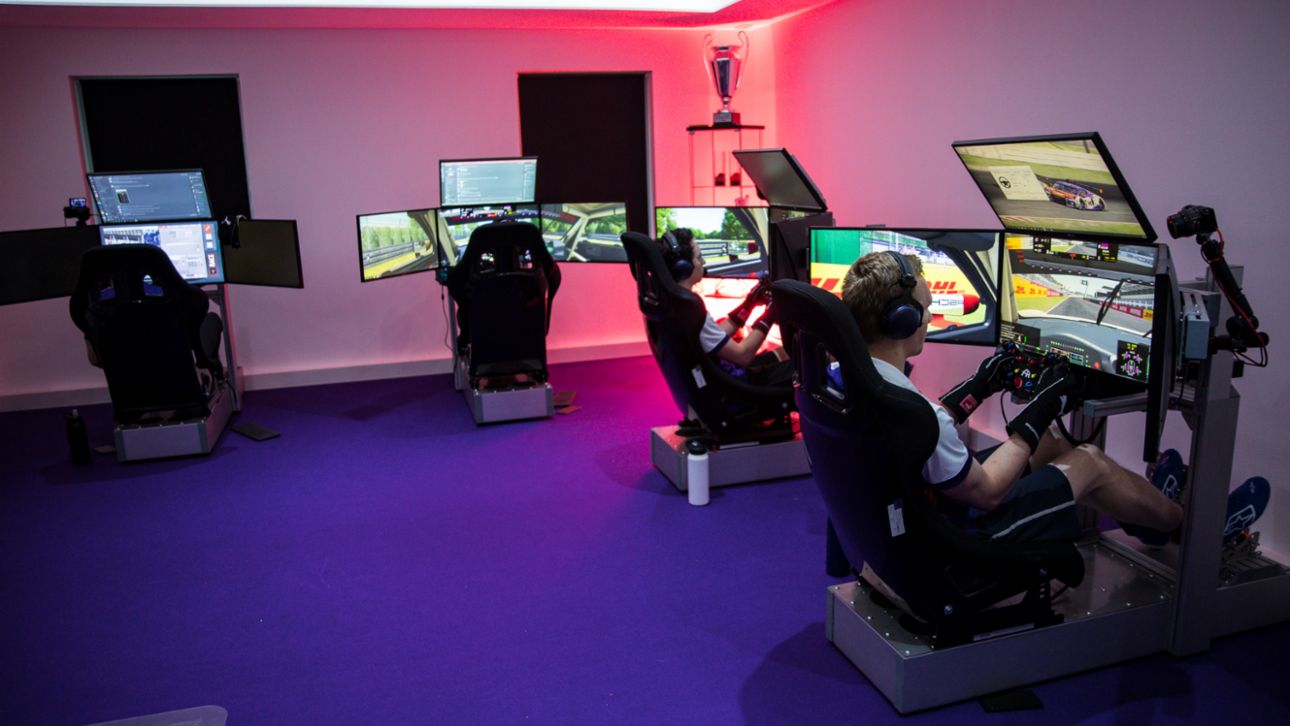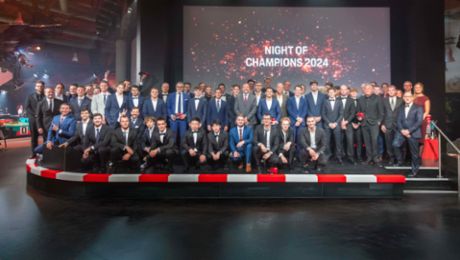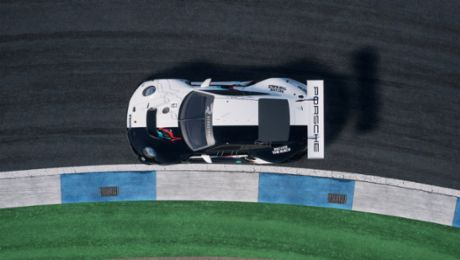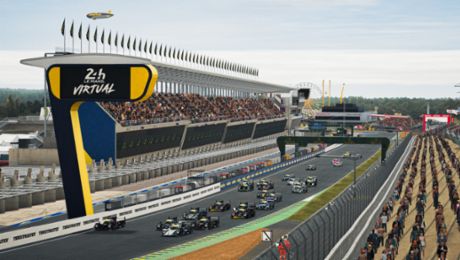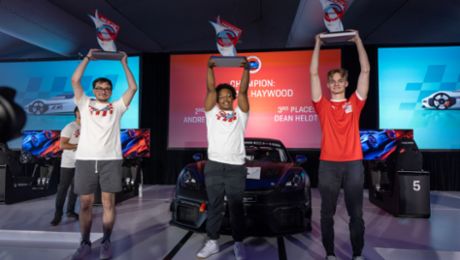This Week.
- Esports Command. Porsche Esports Team Connects with Coanda Simsport.
- Golden Colors. Design of Digital 911 RSR Celebrates First Porsche Le Mans Win.
Porsche Profile. Event Story Lines.
Esports Command. Porsche Esports Team Connects with Coanda Simsport.
Having fully embraced Esports prior to the Covid-19 pandemic lockdown of worldwide motorsports, Porsche developed the TAG Heuer Esports Supercup in 2019. In the process, the German sports car manufacturer developed a partnership with Coanda Simsport to maximize its involvement in virtual racing. The synergies of the two organizations moved into top gear with the increase of sim racing post shutdown. Joining forces with the newly founded Porsche Esports Team for the virtual 24 Hours of Le Mans, the Coanda Simsport operation provided eight sim racers to share driving duties with the eight Porsche factory and junior drivers in the four virtual Porsche 911 RSR race cars.
Headquartered in the city of Gronau in North Rhine Westfalia, Germany – just a stone’s throw from the border of the Netherlands – Coanda Simsport is where the most important “Battle Rooms” of the globally-distributed centers are located. From this command center, Porsche Motorsport controlled the strategy for all four racing cars entered in the virtual 24 Hours of Le Mans. Included was the GTE class-winning No. 93 Porsche Esports Team Porsche 911 RSR.
"As far as a race strategy is concerned, sim racers benefit from the experiences that Porsche has gained at Le Mans."
The command center was used to coordinate the efforts of the drivers who were competing in their own sim rigs around the globe. For instance, it acted as the virtual pit stand of the GTE class-winning effort where Nick Tandy was racing from his farm in Great Britain while Porsche-Junior Ayhancan Güven was in a room in the actual Coanda Simsport headquarters. Others were in the United States like Porsche Young Driver Academy North America graduate Mitchell DeJong competing on his home rig in Orange Country, California. Factory ace Patrick Pilet was in France while TAG Heuer Porsche Formula E Team Test Driver Simona de Silvestro campaigned the No. 94 Porsche Esports Team Porsche 911 RSR from Switzerland. All were synchronized in Western Germany.
A visit to Coanda Simsport is surprising in every way. There is little to suggest that an unusual project is underway behind the front door. Four sim racers from around the world have made this spacious building their home. Their training center is at the edge of the garden – a garage that underwent extensive renovations at the beginning of the year. The space that once held half a dozen road cars has been converted into a sim racing headquarters. Before stepping on to the bright purple carpet of the training room, Josh Rogers (Australia), Mack Bakkum (Netherlands) and David Williams (Great Britain) as well as Porsche Junior Ayhancan Güven (Turkey) dutifully remove their shoes and place them in a specially designed cupboard. This is the morning ritual at the start of what is often a ten-hour day in the simulator.
Güven, the young Turkish racing driver from the Porsche Mobil 1 Supercup series has earned a reputation as a virtuoso in the virtual world. Because of the coronavirus travel restrictions, he moved into the room of the regular Coanda driver de Jong, who was unable to return from the USA.
The environment that the Coanda team boss Philip Stamm has created is a paradise for sim racers. The equipment alone represents cutting-edge technology in every respect. The 34-year-old developed much of it himself, including a special steering system, with partners like Virtual Racing School.
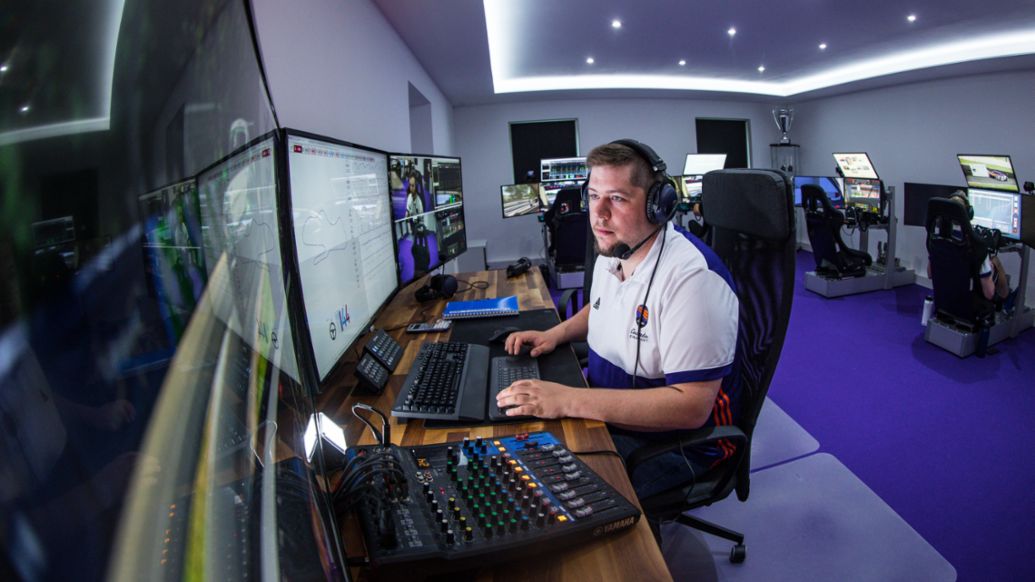
The heart of any simulator is, of course, the processing units. At Coanda, they are virtually invisible in the base of the torsion-resistant rigs that have been developed in-house. The five-core Intel i9 processor operates at 5 GHz. All four computers are identical down to the last detail and are connected to a shared network, with all data streaming back to Stamm’s command center. While his squad trains or contests virtual races, the team manager sits in the background and takes care of tactics and telemetry.
Philip Stamm, Principal, Coanda Simsport.
“Like in real-life racing, intensive data analysis plays a critical role if you want to be successful in sim racing. We look at all the information that is also important in the real vehicle. The Porsche 911 RSR, which is fielded in the digital 24 Hours of Le Mans, has significantly more data than the 911 GT3 Cup race car that we normally use. We can adjust all parameters, compare them with individual driver performances or overlay the individual values of the drivers. This is how we work out any differences and find areas for improvement – just like at the real racetracks. Except, we don’t have to wait until the end of a session: our debriefings are constantly ongoing because we’re not tied to any schedules in the preparation.
As far as a race strategy is concerned, sim racers benefit from the experiences that Porsche has gained at Le Mans. We learn a lot, especially when it comes to mental preparation, a focused approach and clear communication. From this point of view, we can almost be grateful to the corona pandemic, because it has put our sport more in the spotlight and has given us a huge development boost.”
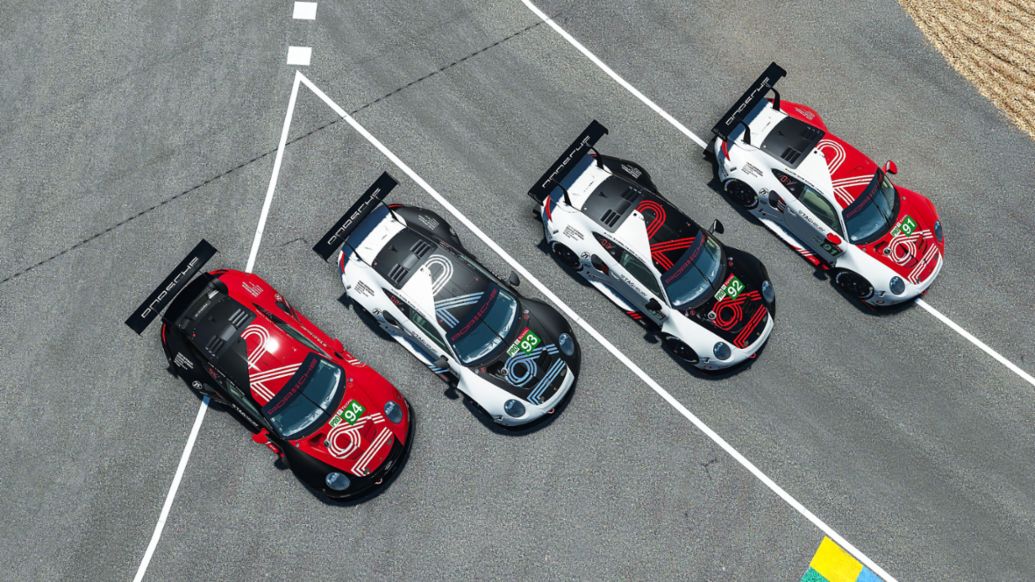
Golden Colors. Design of Digital 911 RSR Celebrates First Porsche Le Mans Win.
The 2020 24 Hours of Le Mans has huge historical significance for Porsche. In 1970, exactly 50-years ago on the weekend of the Virtual 24 Hours of Le Mans, the sports car manufacturer won the famous endurance race for the first time. To honor this anniversary, the digital Porsche 911 RSR featured a special design. All four vehicles carried the red-and-white “Salzburg” paintwork of the 917 KH in which Hans Herrmann and Richard Attwood clinched the first of Porsche’s 19 overall victories at Le Mans.
